If you're tired of waiting for Apple to migrate its Mac Pro workstation-class desktop to Apple Silicon, the Ampere Altra Developer Platform might be the next best thing:
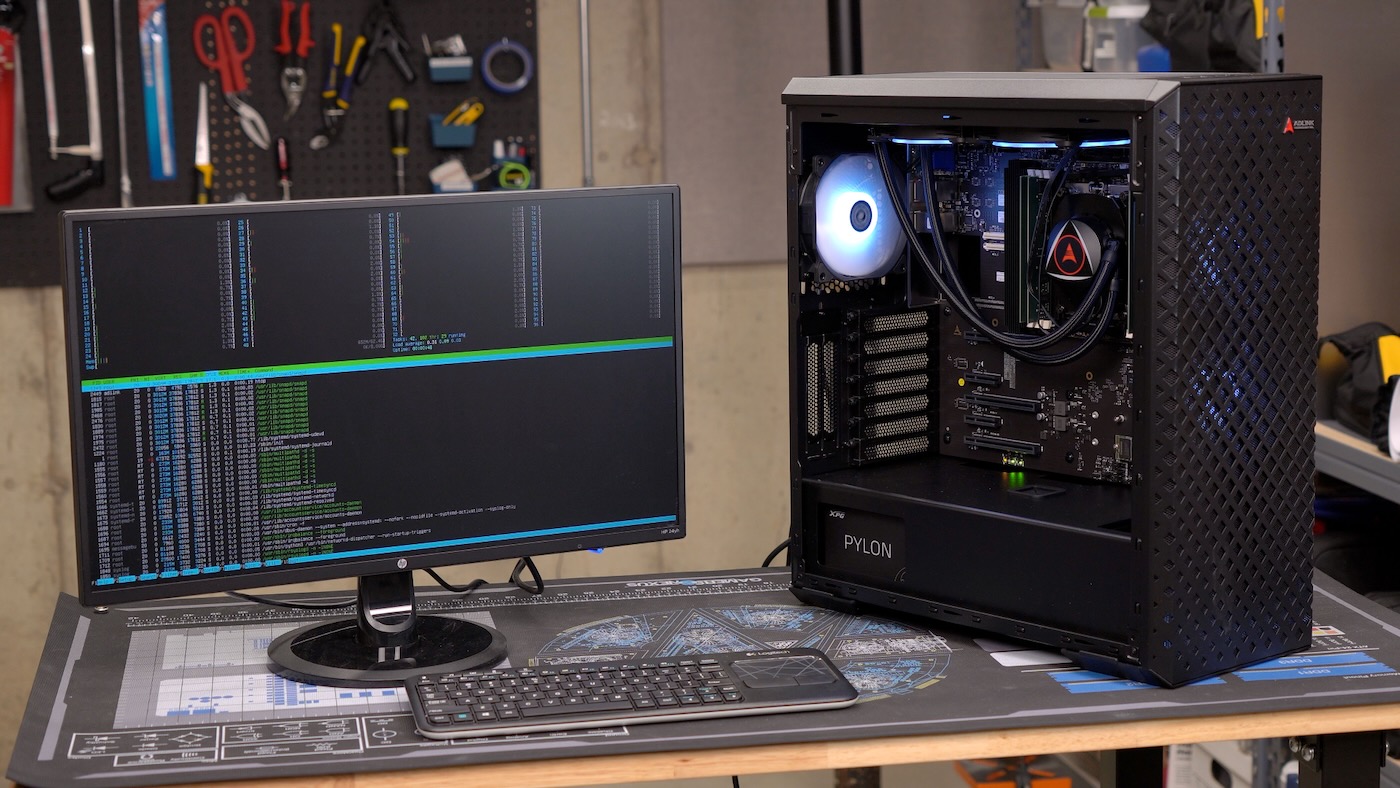
I somehow convinced Ampere/ADLINK to send me a workstation after my now years-long frustrated attempts at getting graphics cards working on the Raspberry Pi. And they sent me a beast of a machine:
- Ampere Altra Max M96-28 on a COM-HPC daughter card (96 cores @ 2.8 GHz)
- 64 GB of ECC DDR4-3200 RAM
- 128 GB NVMe M.2 storage
The individual cores are quite a bit slower than Apple's latest M2 cores (less than half as fast!), but the Neoverse N1 cores are on par with the latest Qualcomm offerings and give similar performance to any Arm cloud servers on the market today.
And... there are ninety-six of them!
In many ways, this workstation is better than any Arm machine Apple has on offer right now (and I say that as a Mac Studio owner...):
- It has upgradeable RAM
- It has an upgradeable CPU
- It has upgradeable NVMe SSD storage
- It has five PCI Express slots (3 PCIe Gen 4 x16, 2 PCIe Gen4 x4)
- It uses a standard PC form factor (allowing for different cases, power supplies, and cooling options
- It even includes a BMC (from ASPEED) for remote IPMI management! (Though this consumes 3-5W at all times, even when the workstation is powered off)
There's something to be said for having nearly the same power (with a competent integrated GPU) silently running in a couple liter case, in the form of the Mac Studio.
But if you want the fastest and most expandable Arm desktop on the planet right now—and one that runs Linux natively, no hacky setup required—this is it.
This unit has 'SystemReady' certification, meaning I should be able to download any standard Linux distro and install it, no custom DTBs or images required. I flashed Ubuntu 22.04 Server for Arm, to a USB drive, inserted it, and installed over the default Ubuntu 20.04 install on the internal NVMe drive. No problems at all! I also downloaded Ubuntu 22.04 desktop, and that worked fine too.
Performance
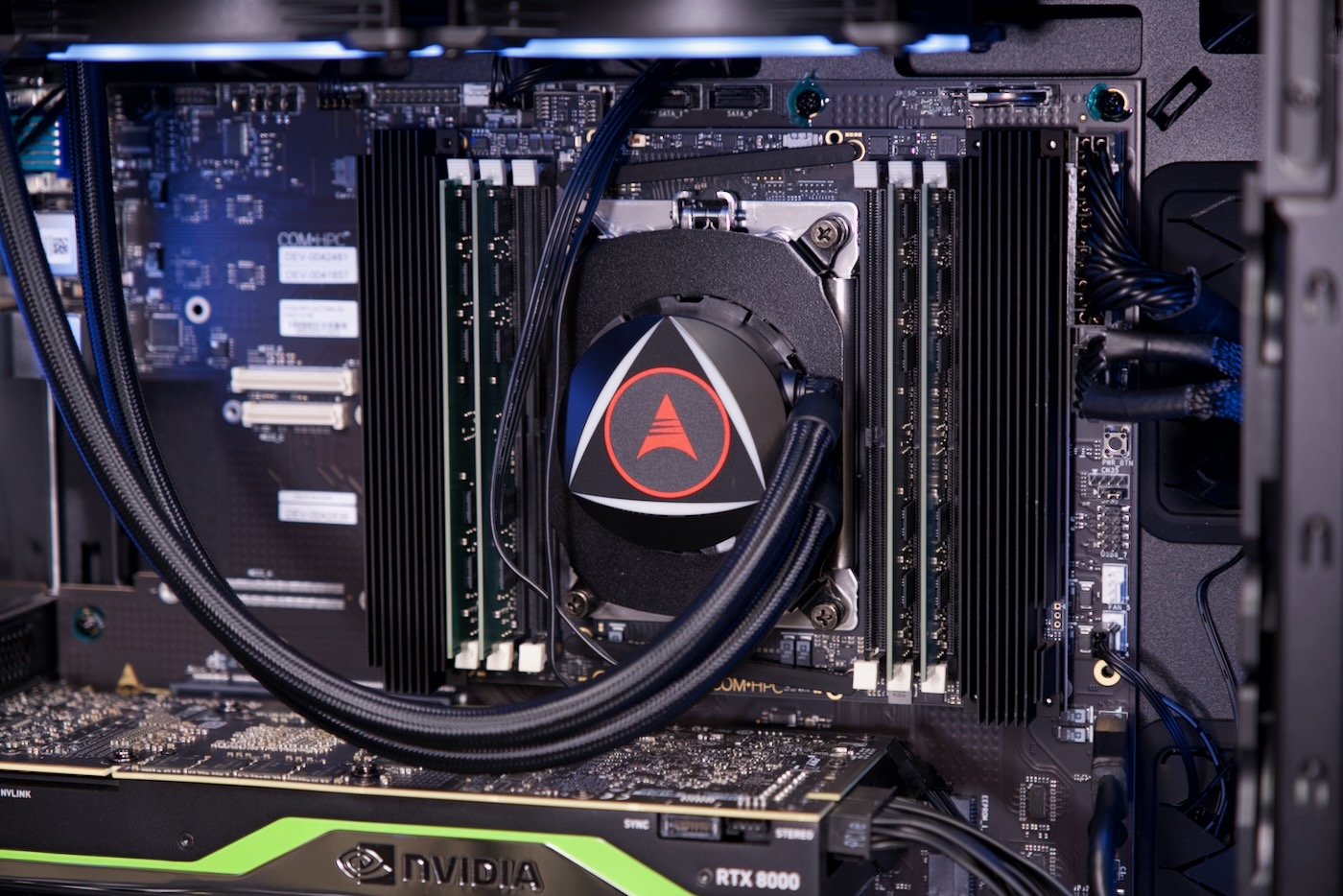
The 96-core version I have only had four of the six RAM slots populated, so it's leaving a little performance on the table due to cross-core NUMA latency in the current configuration. But I ran various benchmarks on the system as configured. (Use this link to read through my raw benchmarking results.)
Geekbench is far from perfect, but it's fun to run since it's been run on anything from multi-processor servers down to single board computers.
This system got an 807 for single-core, which isn't all that fast, about on par with 6th or 7th-gen Intel CPUs. But you don't go Ampere for single core performance. The multicore score of 30,121 is faster than any other CPU I've personally tested, and there's room for improvement. There may be some buggy tests in Geekbench 5 that don't take advantage of all 96 cores, and I haven't successfully run the preview release of Geekbench 6 for Arm yet—see this bug report.
A more practical benchmark is the Top500's favored benchmark, High-Performance Linpack (or HPL). I ran it using my open source top500-benchmark automation.
The first time I ran it, I set it to distribute linear math equations to all 96 cores as fast as it could.
That gave me 377 Gflops at 220W, giving me an efficiency of 1.71 Gflops/W. That's fast, but we can do better. Remembering the core layout discussion from this Anandtech article, I decided to adjust Ps to 4 and Qs to 24, to try to separate out the problems among the four quadrants of the massive chip.
The score was much better, hitting 401 Gflops at 200 Watts, with an efficiency of 2.01 Gflops/W.
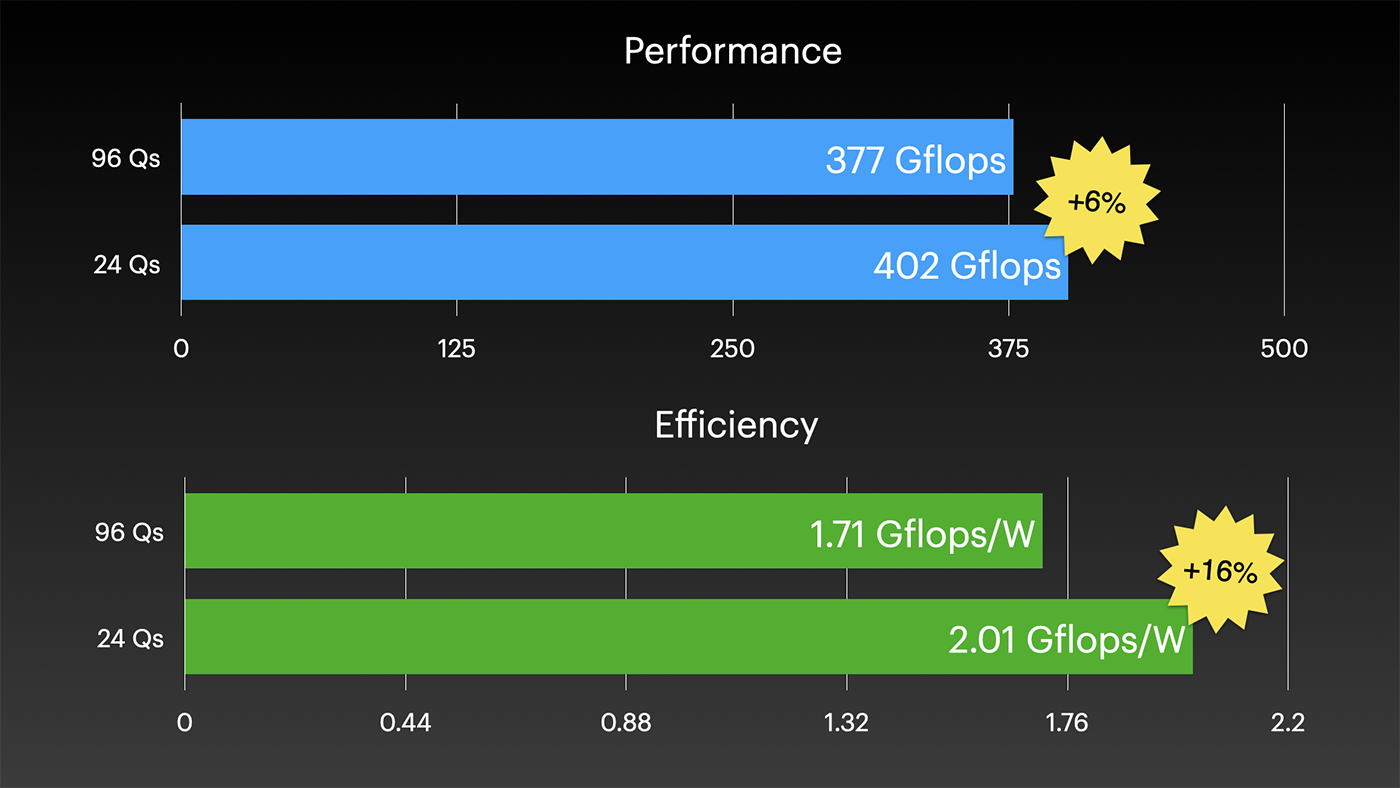
That's 6% more performance, and 16% more efficiency, just by optimizing the way the software runs.
We could probably get even more performance, too. I love doing tests like this, because it illustrates two things:
- Single benchmark numbers are meaningless. Keep that in mind whenever you're looking at reviews.
- On modern chip architectures, software support is just as important as the hardware itself to unlock all the performance.
Across a range of Phoronix benchmarks (example, example 2), this CPU is usually in the upper end of performance (compared to most desktop CPUs at least)—but it's not the top dog.
Most of the time, that honor goes to AMD's latest EPYC chips. Those things are monsters when it comes to performance.
But this chip does shine in some areas, like for multi-tenant web application servers, and especially for efficiency, at least under load. My Mac Studio still owns the efficiency crown (I get 4 Gflops/W on it!)—which is why I'd love to see Apple make a true "Pro" workstation. But the Ampere is a lot more efficient than X86 for most workloads, which is why so many cloud providers have been pushing Arm lately (as fast-but-efficient rather than bleeding-edge performance is an ever-growing concern in modern datacenters).
I should note that this system burns through 60-70W at idle, a symptom of the system's overall "stripped down server" heritage (versus Apple Silicon's "built up from a mobile phone"). I can imagine a future Ampere system being lighter on power usage at idle—it's just not something this current generation had as a design goal.
Windows
After seeing this video from I-Pi demonstrating Windows on Ampere, I decided to try installing Windows on a second NVMe SSD.
The first thing I tried was finding a Windows on Arm ISO. Microsoft, unfortunately, only offers an x86 Windows 11 ISO on their download page.
Searching around, I found the Windows 11 on Arm Insider Preview, which requires an Insider account. Well that's okay, I already have one...
Except... apparently my account was blocked for some reason. I got this error every time I tried downloading it. And I tried Safari, FireFox, and Chrome. I even tried Edge on my Windows 11 PC! Nothing worked.
So I tried building a custom ISO using UUPDump, but the image it generated just resulted a Synchronous Exception, and the installer wouldn't boot.
Over on Twitter, people offered suggestions, ranging from installing Parallels or VMWare Fusion on my Mac, to using other UUP tools, to even downloading a recovery image for my Windows Dev Kit (see my Dev Kit review).
That seemed like the easiest path forward, so I fished out the hardware to grab the serial number. I input that, downloaded the zip file, expanded it, used the Recovery Tool to create a USB install drive, and finally copied over all the Windows Dev Kit recovery files.
Did that work? Nope :(
Paul on Mastodon suggested I install Parallels on my Mac and use the ISO it generates. So, I did that!
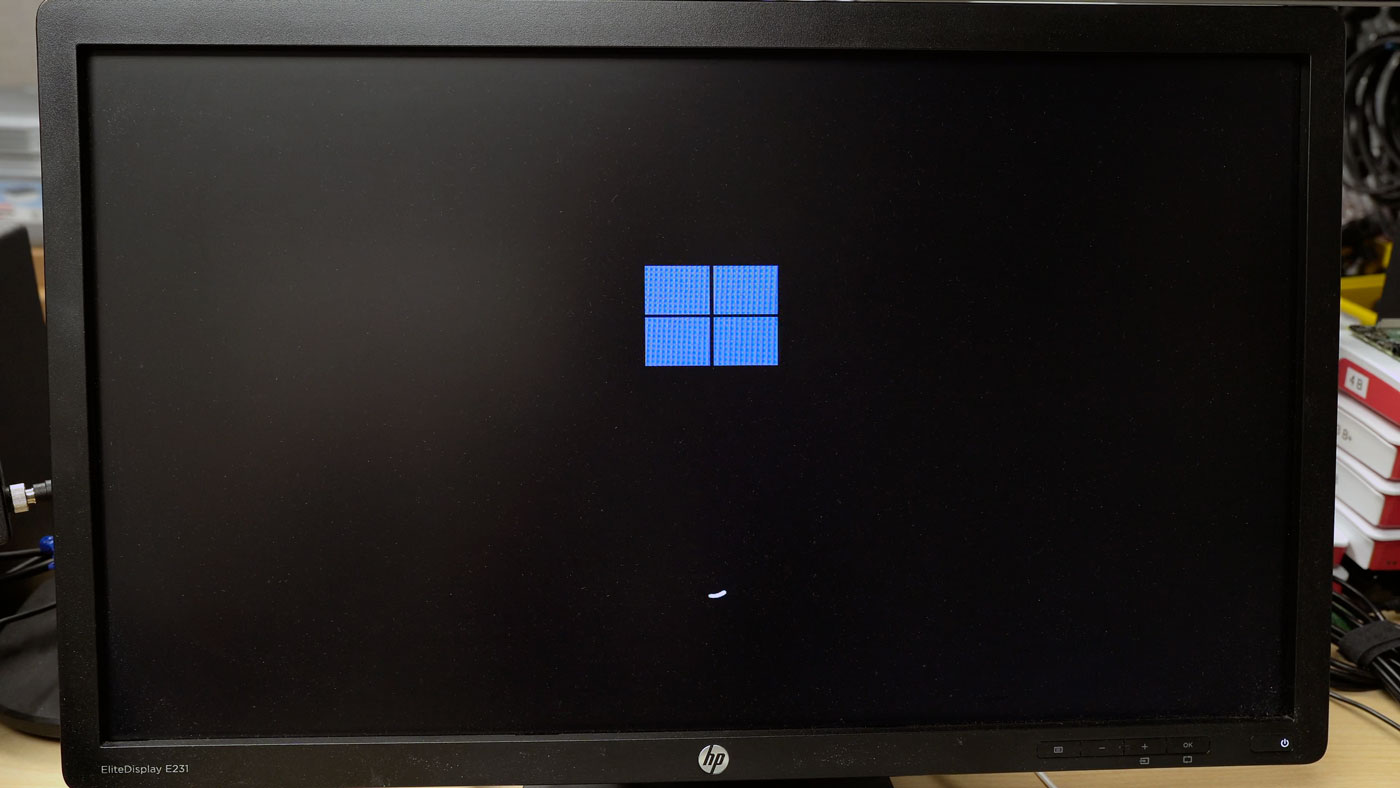
That got further, to the point it looked like Windows started booting—but I got the blue screen of death.
I was about to give up when I found this article from Cloudbase. It seems they got it working on a server-grade Ampere Altra system. And they even documented the process—which required that unobtainable Windows for Arm Preview download!
So I got help from David Burgess over on DB Tech (thanks, David!). He was able to download the VMDK file and sent it to me.
I converted it from a VMDK file to a raw disk image using qemu-img, then I copied that onto the NVMe drive on the machine. And, after a reboot, it... did the exact same thing as the Parallels image:
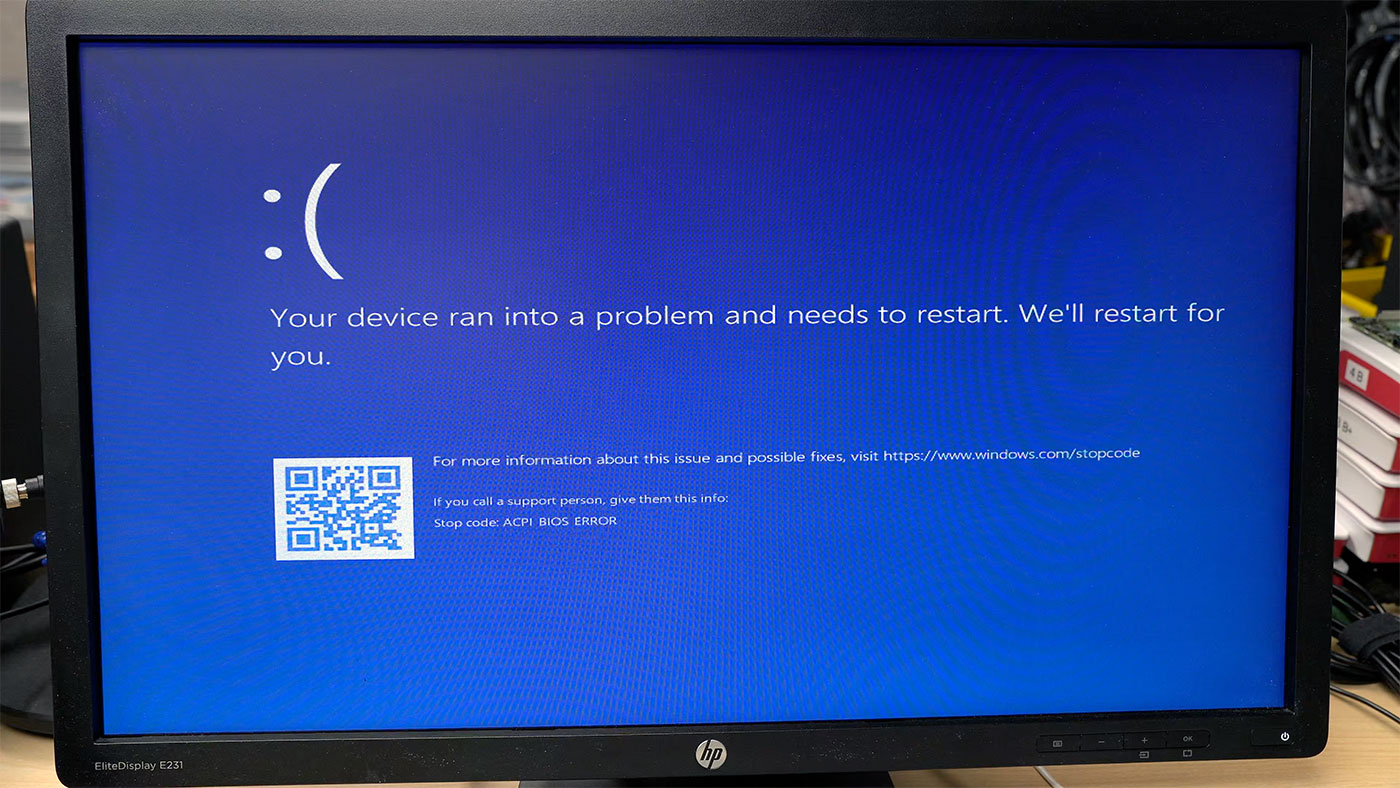
It looks like I'm still getting a BIOS error.
Expansion - Graphics
Moving on from Windows, I decided to test at least one of my Nvidia graphics cards.
The I-Pi Wiki includes a list of approved graphics cards, and supposedly some other ones should work too. (I mean, Gigabyte seems to have Ampere servers with A100s practically oozing out of them!)
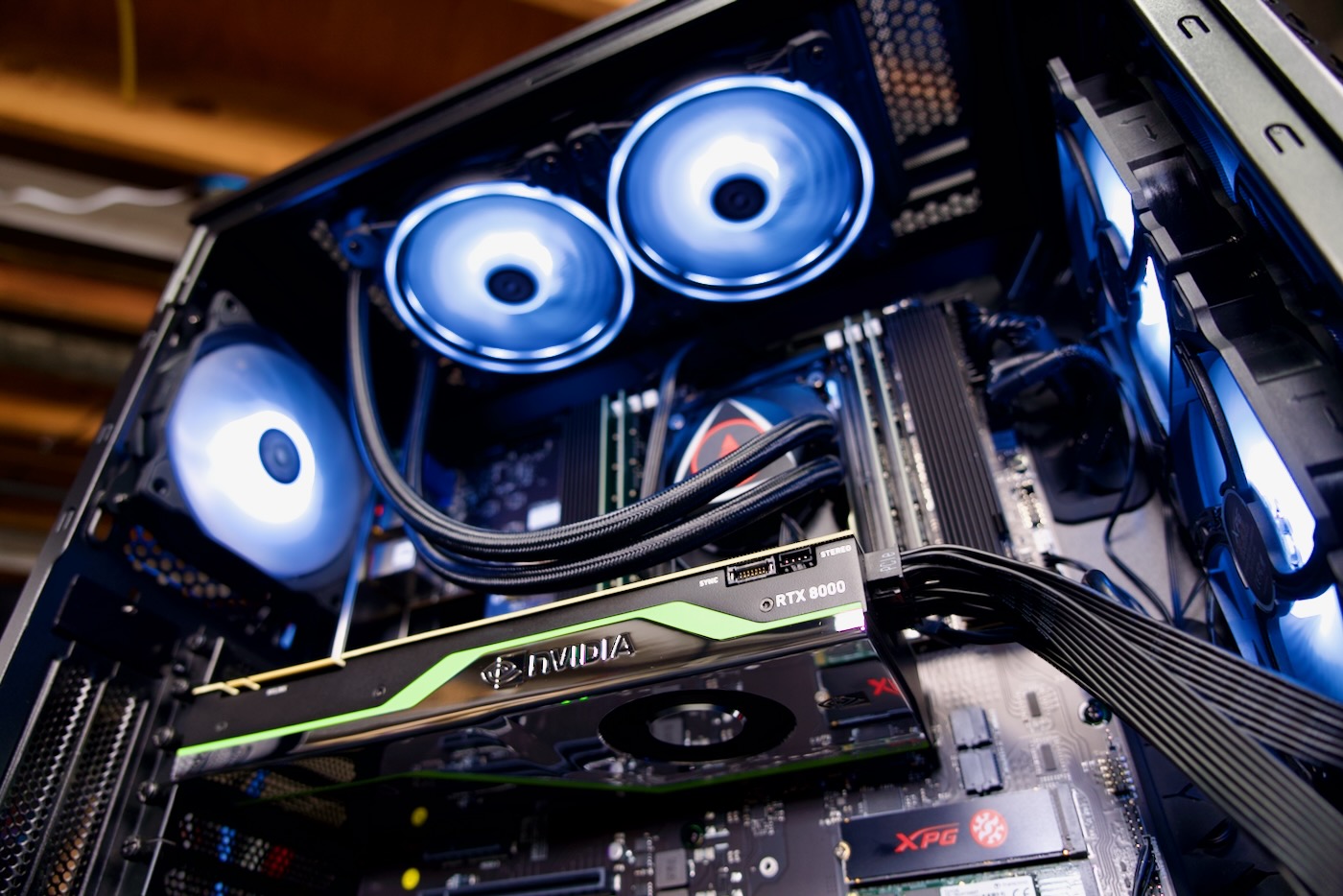
I spent a few hours trying to get this RTX 8000 working. Just like on the Raspberry Pi and Rock 5 B, it was recognized, and I could install Nvidia's Arm drivers.
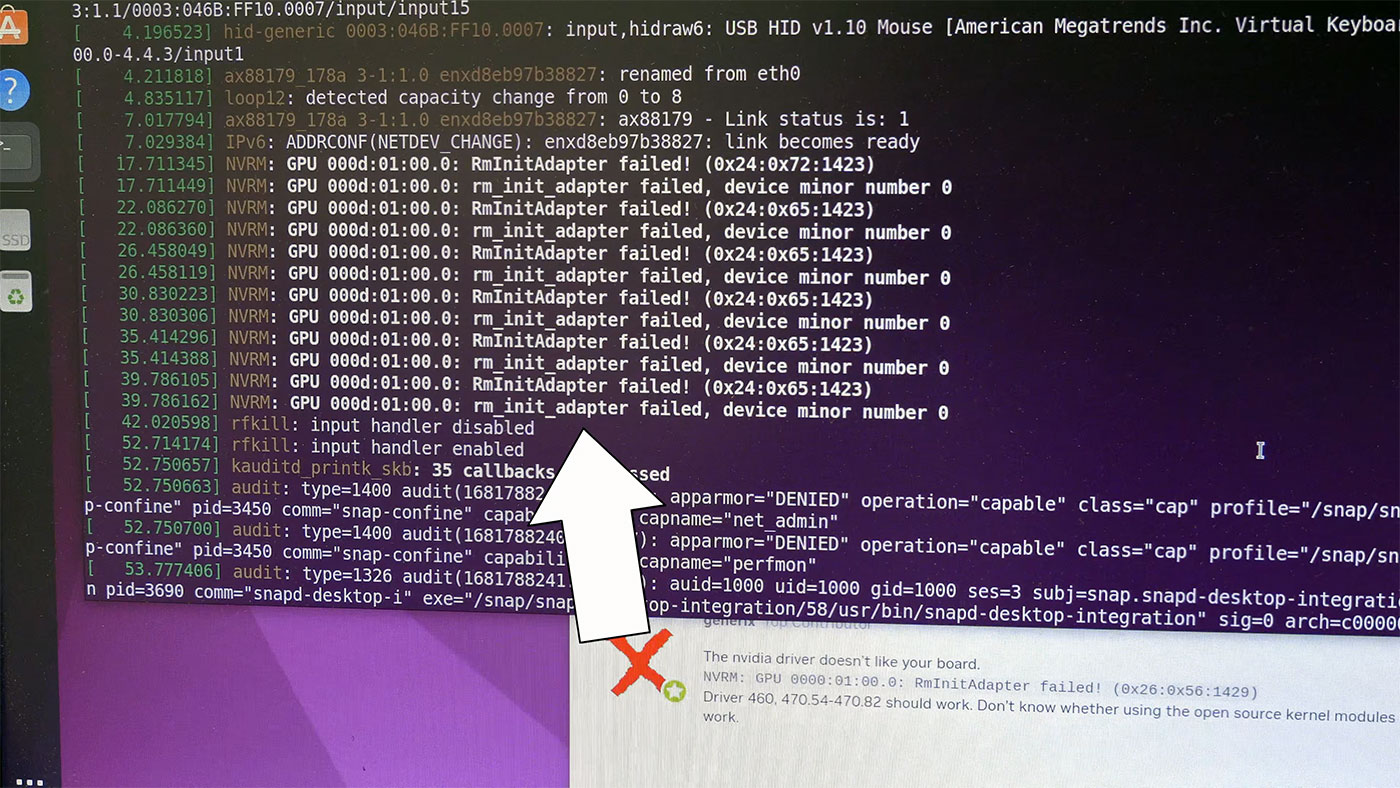
But I still ended up getting this 'RM Init Adapter' failed error, and I couldn't get the card working.
I'll keep plugging away, though. Make sure you subscribe to this blog or my YouTube channel to follow along!
Comments
On the software side there is no approved solution to virtualize MacOS over a cluster of such machines. Would love to replace the many individual desktops at work!
That would be nice, even if the individual VMs would run a little slower. But I don't think Apple's prone to doing that, as they like the juicy checks coming in by requiring their OS be virtualized on their hardware.
I'd be happy to virtualize on their own hardware! Unfortunately the native macos virtual machines are limited for testing - I'd like to give our users the full desktop experience with live-migration etc.
But that’s where Tart comes in!
Nice, I might have to try that.That is a lot of RAM and storage.
Minor typo:
"If you're tired of waiting for Apple to migrate it's Mac Pro workstation-class desktop" ->
"If you're tired of waiting for Apple to migrate its Mac Pro workstation-class desktop"
Whoops, fixed! Thanks!
Curious, do you think this could be a good alternative for those wanting a server that could function for video capture, entertainment (like movies and tv), and networking to another source if you say have someone else you rely on for tasks like editing. I'm not very experienced on software but I do like to keep informed on the hardware side of things so I'm hoping that I can use a setup like this cause it kinda looks more efficient than blowing a massive amount on an even more expensive all around server with an amd heart. I have a gaming pc thats windows already but I see more benefits from a Linux based server for the other side. By the way, keep up the great informative content. I've only found out abut ya recently and feel like you have an even better variety than most other tech content creators.
I am excited for Arm offerings in the laptop space. I am a Linux user and wish I had the remarkable battery life offered on MacBooks and iPads. I am struggling to be equally excited about Arm offerings on the desktop for my own use. Despite that, I am interested to read about the technical innovation.
Great write up Jeff.
"....I talked company-XYZ into sending me $6,000 worth of gear because nobody can get a $35 raspberry pi, so...."
c'mon man - you've jumped the shark into clickbait....
It is cool to see that you can buy a desktop arm computer, but I wonder when you wil be able to do so adorably. Like you do with amd or intel today.
I'm assuming you mean affordably ;)
Technically you can get a Mac for < $600, and the Microsoft Windows Dev Kit 2023 is at that price point too... those aren't quite the same thing, of course, as neither has upgradeable RAM, CPU, or GPU, nor any PCIe expansion built-in.
But it would be great if someone could build a more consumer/prosumer-level chip. The Ampere chips are quite large, as they were targeted more at server-spec hardware that lives in datacenters.
I'm still searching for the right homeserver for me. I tend to have very bursty loads, so idle power consumption is as much a concern to me as efficiency under full load.
Do you happen to have numbers in the idle power? What about the consumption of the BMC? It'd be also interesting whether this thing supports suspend to ram.
Thanks!
Idle power consumption is in the 60W range, and with power turned off (BMC only), it consumes 4-6W. I haven't tested any suspend or hibernate states.
Thank you!
Have you tried ESXi fling https://flings.vmware.com/esxi-arm-edition on that machine?
And I also wonder how it stacks up running Kubernetes compared to other hardware.
Regards, Hugo
Hi Jeff,
Thanks for this post (and others!) - very interesting.
Have you considered bringing Amazon Fire tablets into your mix?
Have you tried passing the GPU to an x86_64 VM through IOMMU/VT-D?
Would you mind generating anchors for your headings so I can make a link like this when I want to invite my colleagues to join in with this horror show: https://www.jeffgeerling.com/blog/2023/testing-96-core-ampere-altra-dev…
Heh... I actually started working on generating them automatically but never got around to it in my last round of website upgrades :(
Hi Jeff I've followed your content for years! I have an odd request. I'm curious if you think you could build some docker images for Jetsons on this rig. I don't see any technical reasons why not but we want to use one of these as a gitlab ci runner to build jetson docker images natively. We currently use qemu and it's so slow!
Yes, they should build native on this hardware, and it's nice that it's native Linux, unlike the other hardware I'd currently recommend (Microsoft Windows Dev Kit 2023).
One ARM board I have that's actually reasonably affordable is the Solidrun LX2160A Honeycomb. I'd highly recommend it if not for the fact that the ARM and AMDGPU maintainers each refuse to accept important patches to fix driver bugs and the like that the hardware triggers. Some of those patches are even completely equivalent to what the x86 maintainers had absolutely no trouble accepting, but naah, ARM devs apparently expect hardware to be perfect.
But as a NAS or such, it's great. The onboard SATA can be troublesome, but an LSI SAS HBA Just Works with it (as long as the OS drive isn't behind the HBA), and it even has multiple built-in 10-gigabit ethernet ports.
I'd love to try one of these Ampere systems, but I can't really justify that kind of expense when I don't really do anything that needs all those cores.
Does this beast boot Linux-libre? Does it require any proprietary firmware to boot? How about the bootloader?
Is it possible for you to make a video using this CPU to mine monero or a crypto that uses CPU. super curies about how well it would perfome.
It performs badly due to ARM low L3 cache, I got like 2k hashes while someone on xmrig benchmark got 16k. No point.